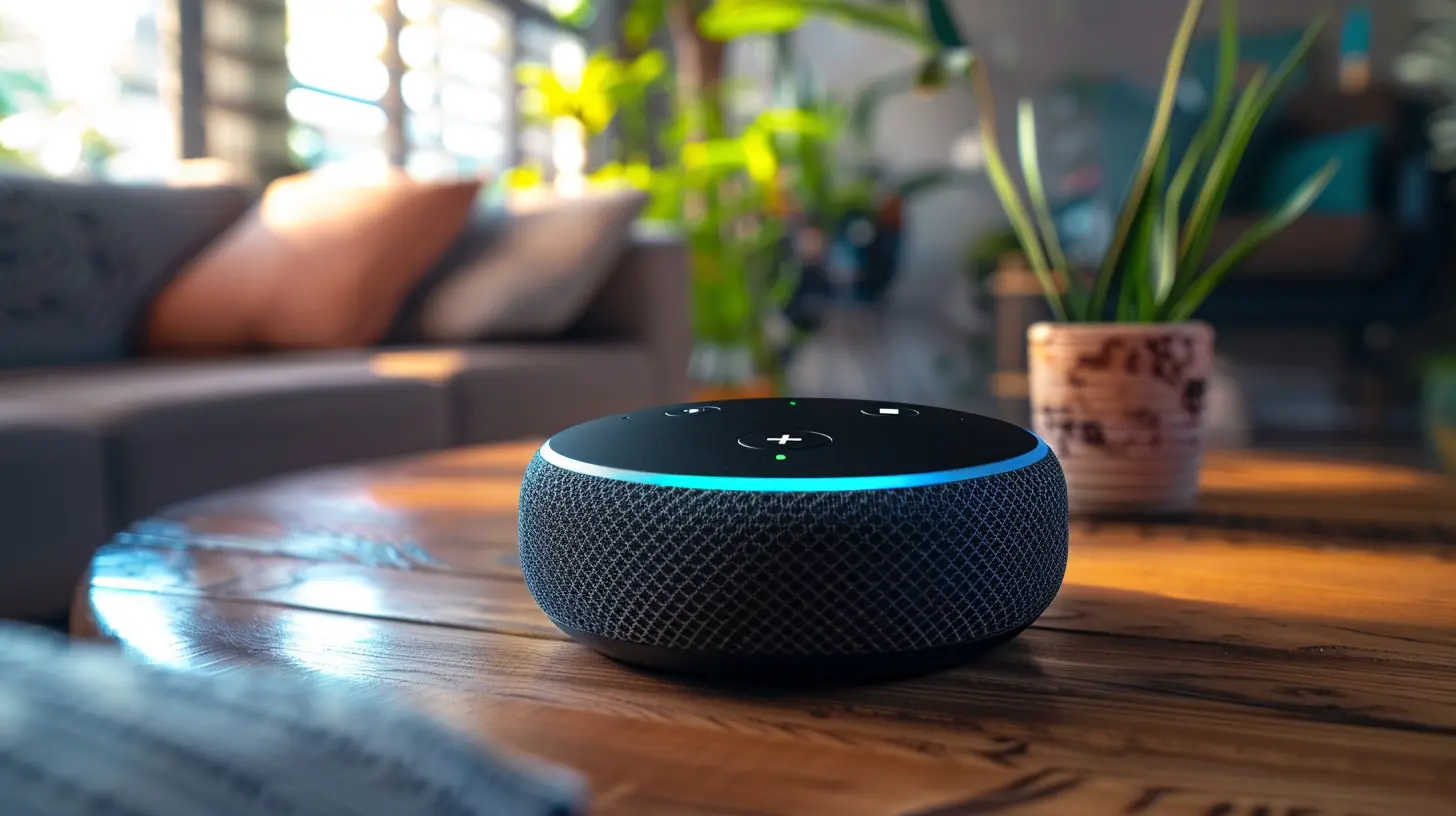Troubleshooting Common Issues with Your Digital Assistant
20 April 2025
Digital assistants like Alexa, Google Assistant, and Siri have become everyday companions. They help us set reminders, play music, control smart home devices, and even tell us jokes when we're bored. But as amazing as they are, they’re not perfect.
Sometimes, they mishear commands, don’t respond at all, or suddenly stop working properly. If you've ever felt frustrated yelling, "Hey Google!" or "Alexa!" without getting a response, you're not alone. But don’t worry—most problems have simple fixes.
In this guide, we’ll go over some of the most common digital assistant issues and how to troubleshoot them quickly.

1. Digital Assistant Not Responding
You say, “Hey Siri” or “Alexa,” but all you get is... silence. Annoying, right? There are a few reasons why this might be happening.Possible Fixes:
- Check the microphone. If your assistant isn’t hearing you, the mic might be blocked or muted. Look for a physical mute button (common on Alexa devices) or see if your phone’s microphone is working.- Move closer or reduce background noise. If you're in a noisy room, your assistant can struggle to hear. Try speaking louder or relocating to a quieter space.
- Reboot your device. Sometimes, a simple restart fixes everything. Turn your smart speaker or phone off and back on.
- Check internet connectivity. Most digital assistants rely on a stable internet connection. If your Wi-Fi is down, your assistant won’t function properly.

2. Digital Assistant Misunderstanding Commands
Ever asked your assistant to "turn off the lights," only for it to start playing music instead? Misunderstandings happen, but here’s how to minimize them.Possible Fixes:
- Speak clearly and precisely. Try rephrasing your command in a way that’s simple and direct. Avoid complex language.- Check for background noise. If there’s music, a TV, or chatter in the background, your assistant may not catch your words correctly.
- Rename your smart devices. If you have multiple devices with similar names (e.g., "Living Room Lamp" and "Living Room Light"), your assistant might get confused. Rename them in the app.
- Train the voice recognition. On some devices, you can improve accuracy by retraining your assistant to recognize your voice better (Google Assistant and Siri have this feature).

3. Digital Assistant Responding Too Slowly
If your assistant takes forever to respond, it can feel like talking to an unreliable friend.Possible Fixes:
- Restart your router. Internet lag is often the cause of slow responses. Restarting your router can speed things up.- Reduce network congestion. If too many devices are using Wi-Fi, your assistant might struggle to keep up. Try disconnecting unused devices.
- Update the software. Make sure your digital assistant's app and firmware are up to date. Updates often come with performance improvements.
- Reboot your device. A simple restart can clear up temporary slowdowns.

4. Smart Home Devices Not Responding to Commands
When your assistant says, “Sorry, I can’t do that right now,” it can be super frustrating—especially if you’re trying to turn off the lights from bed.Possible Fixes:
- Check the smart device’s power. Is the smart bulb, plug, or camera actually turned on? If it's unplugged or powered off, your assistant can't control it.- Ensure the devices are connected to Wi-Fi. Many smart gadgets rely on a strong Wi-Fi connection. If they've dropped off the network, reconnect them through the manufacturer's app.
- Reconnect the device to your assistant. Sometimes, unlinking and relinking a device in the digital assistant's settings can fix the issue.
- Check for firmware updates. Smart devices get software updates, too. Updating them can resolve compatibility problems.
5. Digital Assistant Accidentally Activating
If your assistant wakes up randomly and starts talking, it can be a little creepy. It might think it heard its wake word, but let’s fix that.Possible Fixes:
- Reduce accidental wake-ups. Some devices allow you to lower the microphone sensitivity so they don’t activate as easily.- Change the wake word. If “Alexa” or “Hey Google” is too common in your household, switch to a different wake word (Amazon allows this, while Google does not).
- Move your device. If it's near a TV or speaker, background noise might be accidentally triggering it. Try placing it in a quieter spot.
6. Issues with Multi-Device Responses
Ever had multiple assistants respond at the same time when you say "Hey Google" or "Alexa"? It can get chaotic fast.Possible Fixes:
- Use only one device in a room. If you have multiple assistants in the same space, they might all try to respond at once. Spread them out or turn off wake-word detection on secondary devices.- Prioritize a preferred device. Some ecosystems (like Google's) let you choose which device should respond by adjusting settings in the app.
- Rename your devices. If multiple gadgets have similar names, changing them can prevent conflicts.
7. Privacy Concerns: Is My Assistant Listening to Me?
Let's be honest—many people worry about digital assistants listening in on private conversations. While they technically only activate upon hearing their wake word, it's good to be cautious.Possible Fixes:
- Mute the microphone when not in use. Most smart speakers have a button that disables the mic entirely.- Review voice history. Check your assistant’s app for a history of recorded commands. Google Assistant, Alexa, and Siri all let you review and delete stored voice data.
- Disable voice recording storage. In some settings, you can prevent your assistant from saving voice recordings altogether.
- Turn off personalized ads. If you’re concerned about ads based on voice commands, you can tweak ad settings in your Google or Amazon account.
8. Third-Party App Integration Failures
If your digital assistant can't control Spotify, Netflix, or smart home apps as expected, something might be wrong with its app connections.Possible Fixes:
- Relink the service. Sometimes, the connection between a third-party app and your assistant gets disrupted. Try unlinking and linking it again in the settings.- Check subscription requirements. Some features (like playing Spotify on-demand) require a premium account. Ensure you're subscribed to the right plan.
- Sign in with the correct account. If you have multiple accounts (especially on services like Google or Spotify), double-check that you're using the correct one.
Final Thoughts
Your digital assistant is meant to make life easier—not harder. Luckily, most common issues have quick and easy fixes. Whether you're dealing with a sluggish response, misheard commands, or connectivity problems, a little troubleshooting can go a long way.And if all else fails? A good old-fashioned reboot almost always does the trick.
Got any other problems with your digital assistant? Drop them in the comments, and let’s figure them out together!
all images in this post were generated using AI tools
Category:
Digital AssistantsAuthor:

Jerry Graham
Discussion
rate this article
6 comments
Tank McQuillen
Ask it nicely; it listens!
May 5, 2025 at 8:05 PM

Jerry Graham
Absolutely, a polite approach can go a long way in enhancing your experience with digital assistants!
Rosalyn McAdams
Valuable insights for everyday users.
May 3, 2025 at 4:03 AM

Jerry Graham
Thank you! I'm glad you found the insights helpful.
Murphy Curry
Great article! Troubleshooting tips for digital assistants are essential for maximizing their potential. I especially appreciated the section on voice recognition issues, as it’s a common problem many users face. Clear steps make it easy to follow. Looking forward to more insights on optimizing tech interactions!
April 30, 2025 at 10:48 AM

Jerry Graham
Thank you for your feedback! I'm glad you found the tips helpful, especially on voice recognition. Stay tuned for more insights on optimizing tech interactions!
Jacob Mason
In the realm of bytes and code, Where voices weave and thoughts explode, A guide emerges, shining bright, To tame the woes in digital light. With tips and tricks, let insights flow, Embrace your assistant, watch it grow!
April 29, 2025 at 11:29 AM

Jerry Graham
Thank you for your poetic take on the digital assistant journey! Your words beautifully capture the essence of navigating tech challenges.
Jasmine Elliott
Great tips for enhancing digital assistant performance!
April 24, 2025 at 12:37 PM

Jerry Graham
Thank you! I'm glad you found the tips helpful!
Zephyrian Harper
Great tips! Very helpful for troubleshooting issues!
April 20, 2025 at 11:41 AM

Jerry Graham
Thank you! I'm glad you found the tips helpful!




